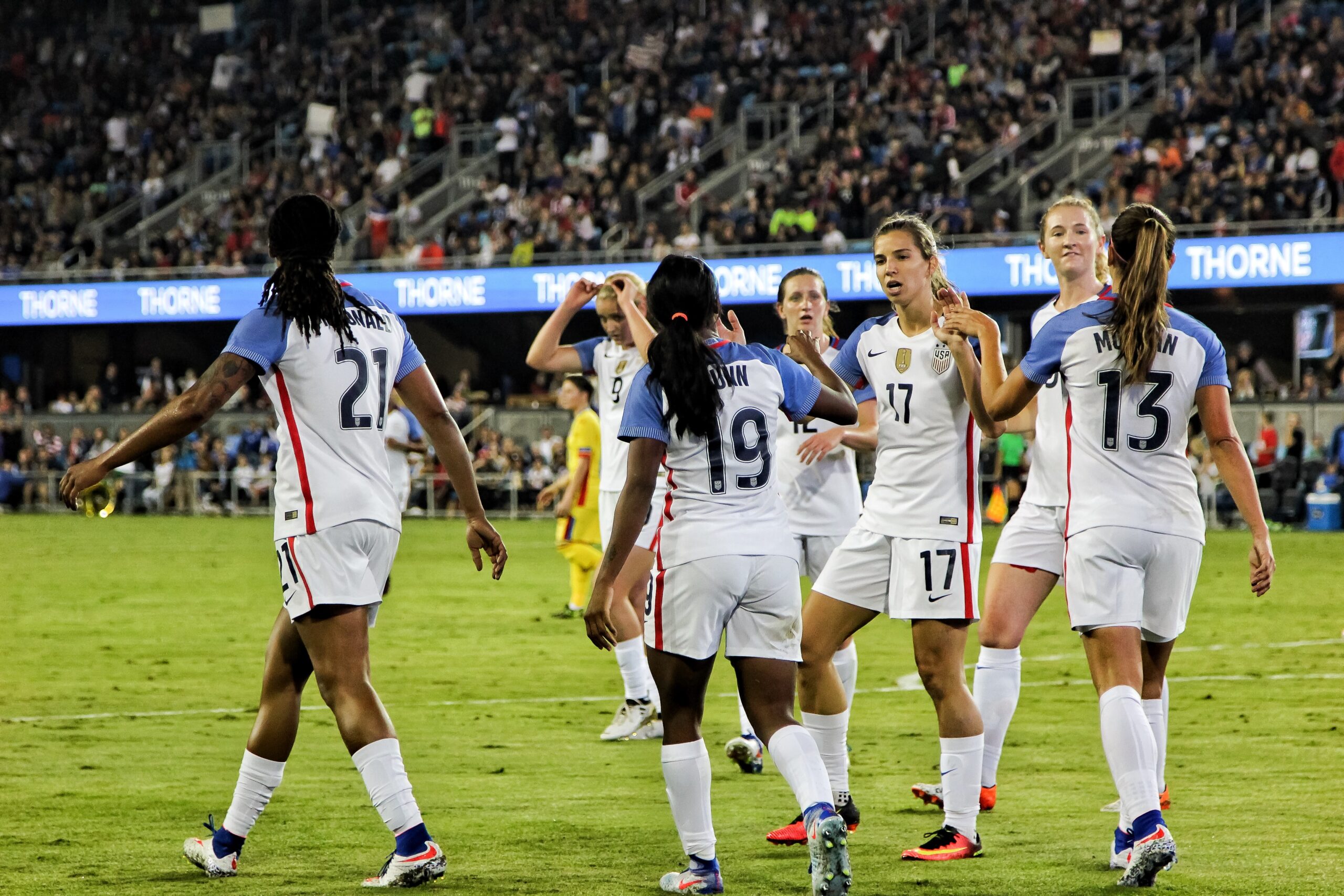The U.S. Women’s National Team has won the last two World Cups but is still looking at a steep difference in pay compared to the U.S. men’s team, which has never won a cup. Photo by Chris Leipelt on Unsplash.
By Jeremy Gonzalez, Sports Editor
Major progress was made in the battle for equal wages between men and women in professional sports.
The Brazilian Football Confederation (CBF) and the English Football Association announced September 2 that both of their men’s and women’s national teams will receive equal pay.
“Since March of this year, CBF has made an equal value in terms of prizes and daily rates between men’s and women’s [soccer],” CBF president Rogério Caboclo said in a statement. “That is, the players earn the same thing as the players during the calls. What they receive by daily call, so will the women. There is no more gender difference, as the CBF is treating men and women equally.”
The English FA confirmed that equal pay for its women players had been introduced back in January.
“The FA pays its women players exactly the same as their male counterparts for representing England, both in terms of match fees and match bonuses,” the FA told The Guardian. “This parity has been in place since January 2020.”
England and Brazil now join Australia, Norway and New Zealand in paying equal wages to their men’s and women’s national teams.
England and Brazil are two of the most well-known soccer nations in the world. These two soccer associations providing pay parity could have some implications on how and when the United States Soccer Federation might follow if it chooses to join the other five soccer federations that have implemented pay parity.
In the U.S., the women’s national team has been at the forefront of the battle for equal wages, alleging gender discrimination in earnings and suing the U.S. Soccer Federation in 2019 for violating the Equal Pay Act. The team had its claims dismissed by a court this past May and a bid to appeal the decision was additionally denied.
While the English FA has committed to equal pay, the money that England’s male and female players can earn from playing in major tournaments still differs tremendously because of the gender disparity in prize money that is offered by UEFA and FIFA.
The staggering difference can be noted from the bonuses of the most recent World Cup winners. The French FA had received $38 million because their men’s national team had won the 2018 World Cup over Croatia.
The U.S. Soccer Federation only received $4 million for the women’s national team victory in the 2019 World Cup over the Netherlands. In comparison, FIFA handed the men’s winning team over nine times the amount of prize money.
The U.S. women’s team has been far more successful than the men’s team on the international level. The women’s team just won its fourth World Cup in 2019 while the men’s best finish came back in 1930 when the team placed third. The men also failed to qualify for the 2018 World Cup.
The men’s and women’s teams from the U.S. have negotiated separate collective bargaining agreements, which set up different pay structures for each team, complicating the possibility of equal salaries.
While the battle for pay parity within U.S. Soccer is still ongoing, having two major soccer nations announce equal wages within their associations presents major progress in the overall big picture
The likelihood of the U.S. joining Brazil and England slightly increased and could make them revisit the claims made by the women’s national team.

